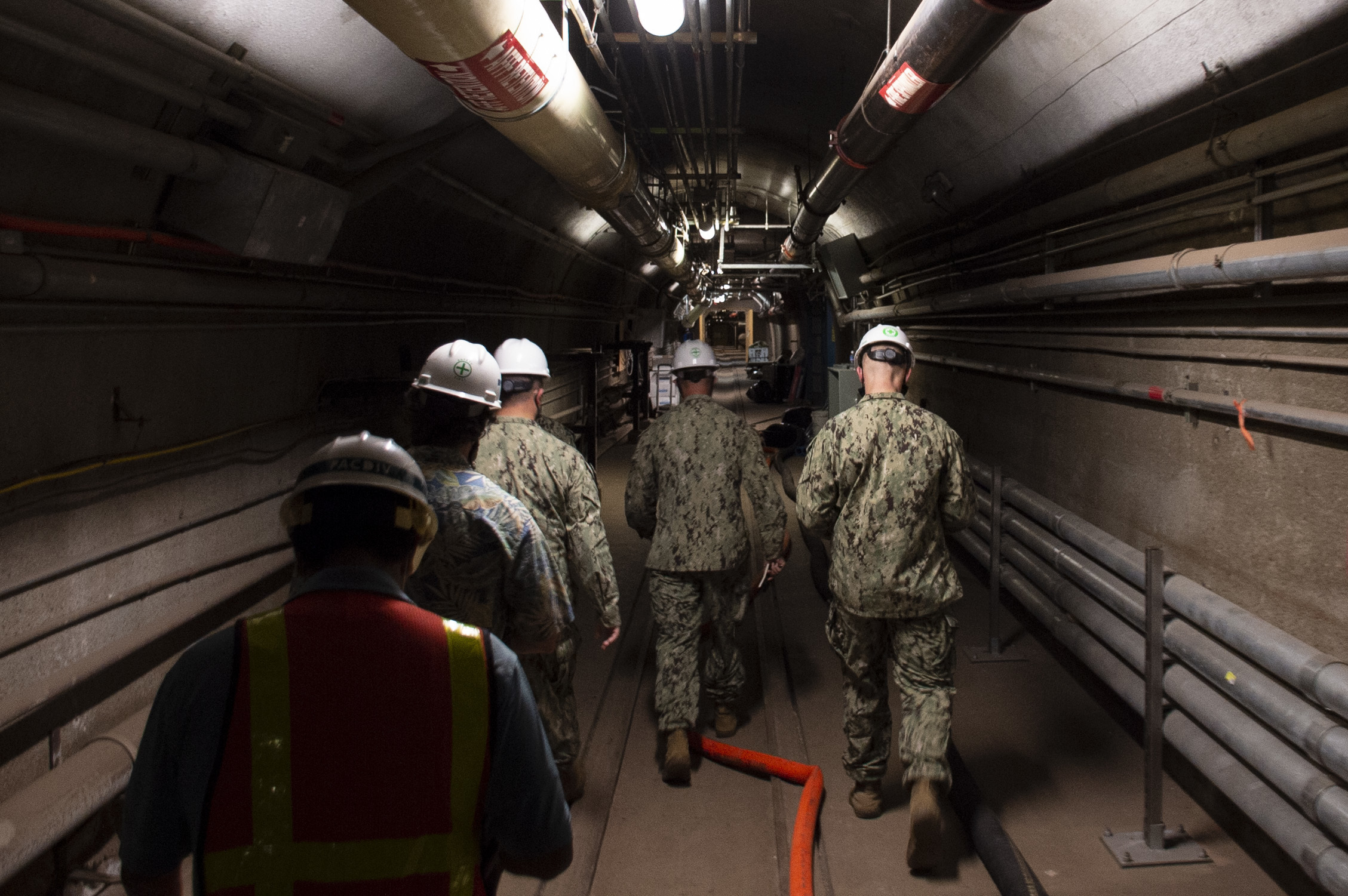
Whether the Red Hill bulk fuel storage facility in Hawaii remains open is uncertain, following two major fuel spills that contaminated Joint Base Pearl Harbor-Hickham’s water supply and forced thousands of families out of their homes after Thanksgiving.
Testifying Tuesday before the House Armed Services readiness subcommittee, Rear Adm. Blake Converse, deputy commander of the Pacific Fleet, said, “we need to complete our investigation” and assess the findings of third-party investigators as to how the spilling of 14,000 gallons of jet fuel happened at Red Hill and can the problems identified in manning, operating procedures and training be fixed.
Both spills were attributed to “operator error,” he said several times.
Converse said those reports “will allow [the Navy] to make a long-term decision” as to whether the facility, used by all the services in the Indo-Pacific, will remain in operation. He said the question comes down to evaluating other sites and finding “better methods of distribution.”
“This is a strategic fuel facility,” he said, preferring to go into closed session to discuss in detail workarounds and options. Converse said there was “no immediate impact” on readiness or operations in the theater. “In the short term, we can manage with our fuel stock” and Defense Logistics Agency support.
He said the spills in May and November were not linked “to the integrity of the tanks.” Converse added, “there seems to be some systemic” operator error.
The facility is reported to be able to store 250 million gallons of fuel.
As matters stand now, the Navy is complying with a state of Hawaii order Dec. 6 to defuel the isolated well at the facility. Panel members pressed the Navy witnesses on whether the service would seek a Department of Justice opinion to take that ruling into a federal court for a decision on further compliance. Earlier, a Navy official at a state hearing that it wasn’t clear whether the spill had sickened anyone. On Friday, the Navy under orders from Adm. Samuel Paparo, Pacific Fleet commander, said it would comply with Hawaii’s directives.
Rep. Kalal’l Kahele, (D-Hawaii), said, “we are at an inflection point for the state of Hawaii’s public trust and relationship with the U.S. military.” Kahele, who represents the district affected by the spills, added later that 77 percent of Oahu’s water supply was at risk if the Pentagon didn’t take necessary steps to protect the island’s aquifers.
“The technical assessment [of the spill] has been completed” and will be sent to Hawaii health officials for their action, Rear Adm. Peter Stamatopoulos, who heads Naval Supply Systems Command, said.
Converse put the cost so far of the clean-up at the site and lodging, transportation and other expenses for the more than 3,800 families forced out of their homes at $250 million. Rep. Joe Courtney, (D- Conn.) and chairman of the seapower panel, noted that was the cost of maintenance work for a warship that would have to come out of the Navy’s overall budget.
When asked whether the Navy would pick up follow-on health care costs to families of service members affected by the spill, Vice Adm. Yancy Lindsey said, “yes.” He referred committee members to a website that the Navy is regularly updating on steps being taken provide clean water to the joint base.
Capt. Michael McGinniss, Pacific Fleet surgeon, said service members and their families were reporting symptoms of nausea, vomiting and diarrhea following the Nov. 20 incident. “We need to get this right,” he said referring to the clean-up which also includes distributing bottled and bulk water to affected civilians and follow-on treatment to service members and their families.
As to when displaced families will be able to return to the homes, Converse said it would likely be late January or early February and would take several weeks to complete.
Rep. Mike Walz, (R-Fla.) and newly appointed ranking minority member, said, “I’m coming away with more questions than answers” in assessing the situation that included the Navy issuing misleading information on the extent of the spill and what residents needed to do in its immediate aftermath.
With five Navy organizations testifying at the hearing, he added, “we need to take a hard look at organization” to determine accountability when accidents such as Red Hill occur.





